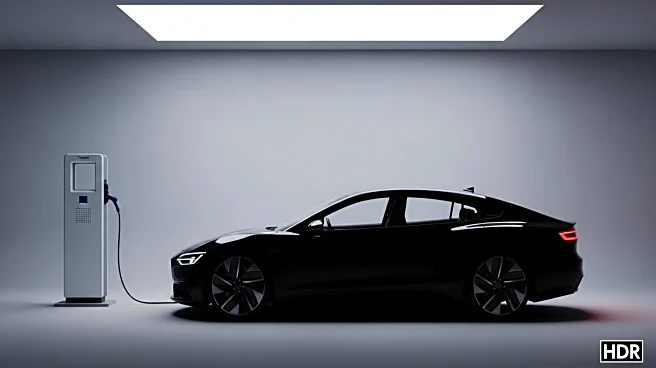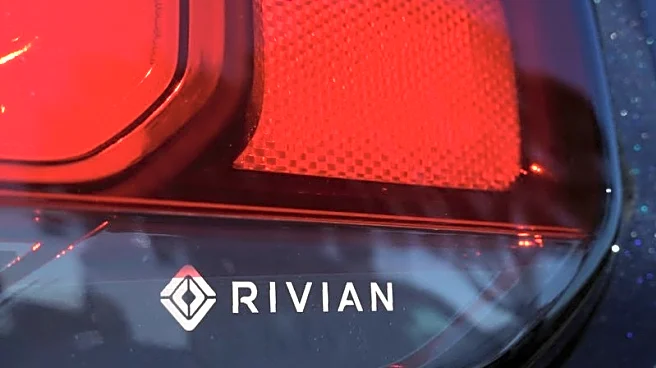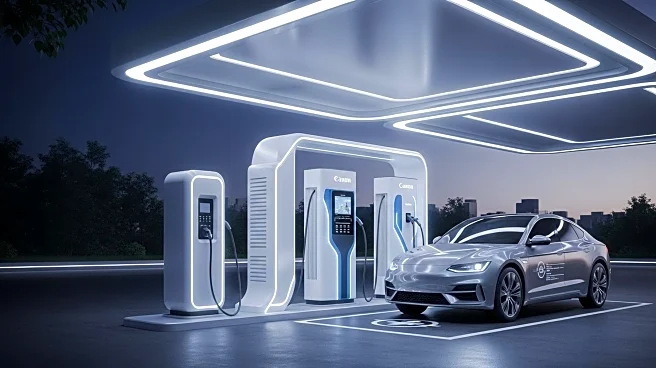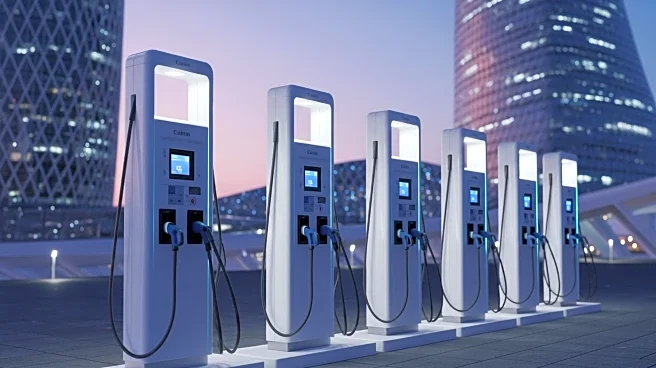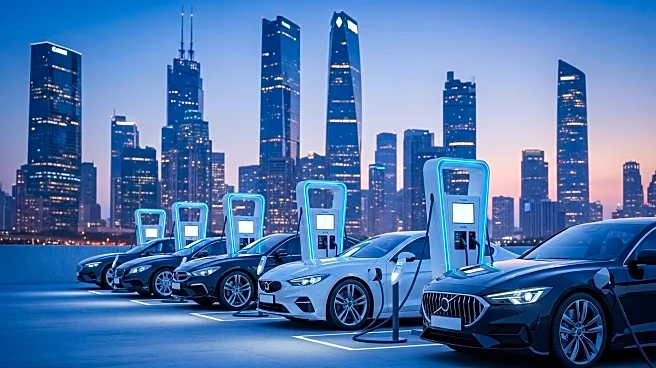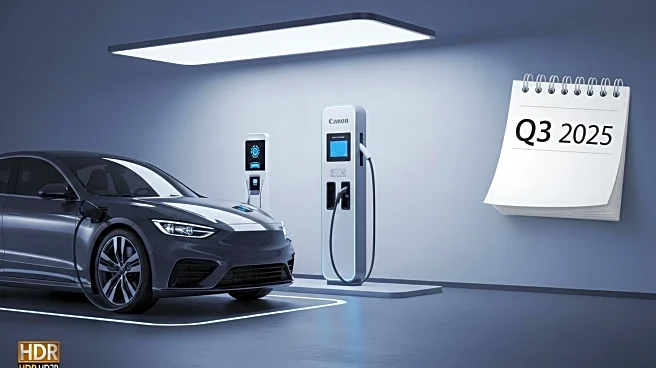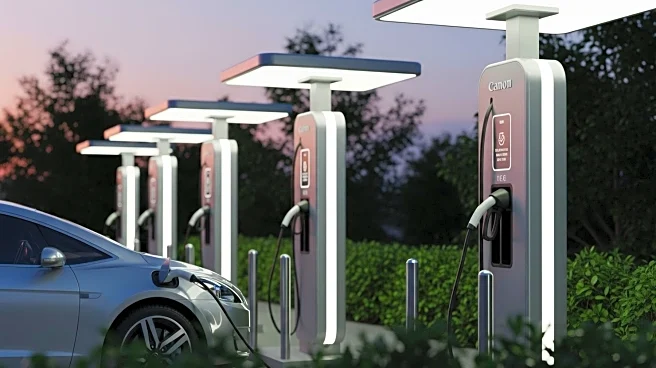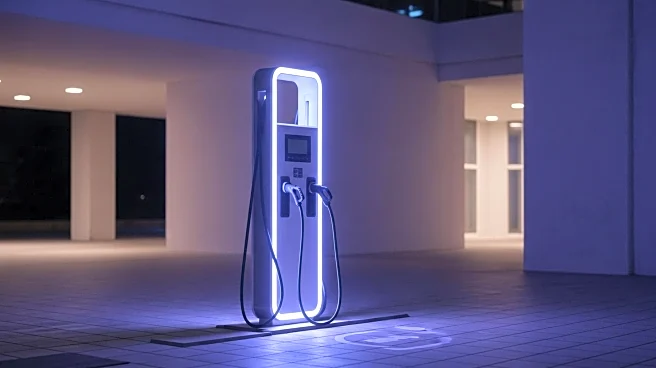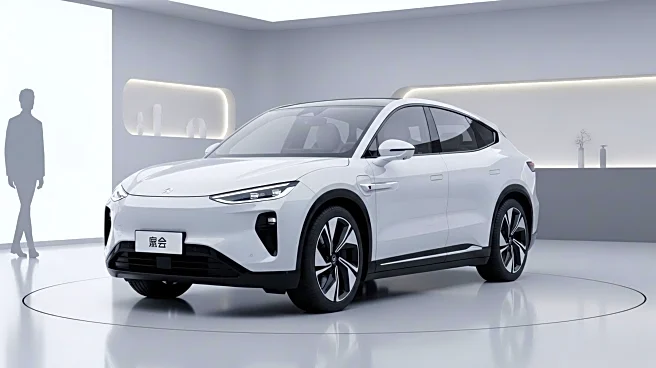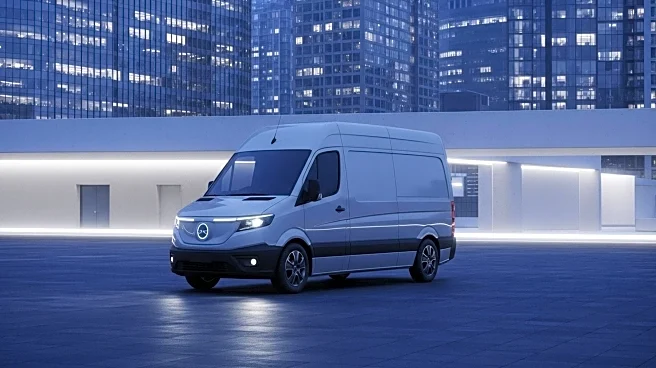What's Happening?
Rivian Automotive has adjusted its annual deliveries forecast, reducing the midpoint of its expected range due to the expiration of federal tax credits. The electric vehicle (EV) manufacturer now anticipates delivering between 41,500 and 43,500 vehicles this year, a slight decrease from its previous forecast. This adjustment comes despite a 32% increase in deliveries, as the company and the broader EV industry face challenges following the U.S. Congress's decision to abolish a $7,500 tax credit on EV leasing. The expiration of this credit, which occurred on Tuesday, was expected to lead to a decline in EV sales and leasing, although a surge in purchases was noted as consumers rushed to take advantage of the credit before it ended. Rivian's shares fell by over 5% in early trading following the announcement.
Why It's Important?
The expiration of the federal tax credit is significant for the EV industry, as it has been a critical factor in promoting sales and leasing. The removal of this incentive could lead to a slowdown in the adoption of electric vehicles, impacting manufacturers like Rivian that are striving to increase market share. Additionally, the imposition of high tariffs on auto parts imports has increased production costs, further squeezing profit margins for EV makers. These developments could hinder Rivian's efforts to enhance profitability, especially as it prepares to launch its more affordable R2 SUVs next year. The company's ability to navigate these challenges will be crucial in maintaining its competitive position in the rapidly evolving EV market.
What's Next?
Rivian is set to release its third-quarter financial results on November 4, which will provide further insights into its performance amid these industry changes. The company may need to explore strategies to mitigate the impact of the tax credit expiration and tariffs, such as reorganizing supply chains and increasing domestic investments. Stakeholders will be closely watching how Rivian adapts to these challenges and whether it can sustain its growth trajectory in a more competitive and cost-sensitive environment.

